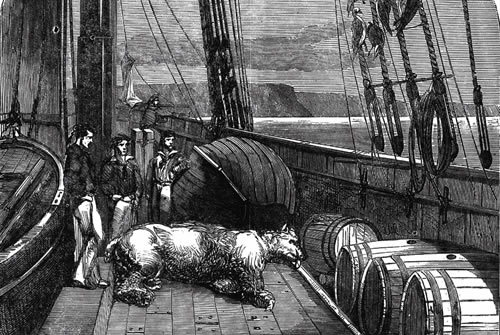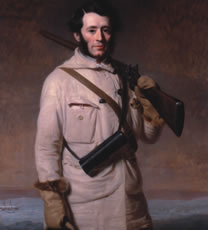MEDIA COVERAGE
Radio 1's Morning Ireland
Dundalk devotes exhibition to Arctic Fox
RTE's Nationwide
Exhibition on Dundalk polar explorer
About the Arctic
Fauna
The area has a strong wildlife presence consisting of fish, marine mammals, birds and land animals. The close proximity of land masses to the Arctic facilitates ease of access to the area when weather conditions improve. Migrating animals move north with the arrival of spring and travel south at the onset of winter. These include Arctic hares, lemmings and muskox. These animals form the prey for foxes, wolves and wolverines. The polar bear is also a predator but prefers to feast on marine life such as seals.

The seasonal rotation plays a central role in determining the way of life with sunlight disappearing in September only to return the following March. This is best illustrated when the introduction of 24-hour sunlight energises the Arctic Ocean allowing small marine plants to bloom. This forms the basis of the Arctic’s marine food chain. The onset of spring allows mother seals to give birth to their cubs, but because they cannot do so in water, this has to be done on firm ice. This landscape provides the perfect opportunity for the seals’ chief predator, the polar bear, to feast on its unsuspecting prey. The onset of the seasonal thaw provides many opportunities for the feeding requirements of seabirds, seals and whales but not for the polar bear as the absence of firm ice makes life much more difficult. As a result, the bear must now attempt to catch its prey while swimming. If this fails, raids on birds’ nests are a distinct possibility, as is scavenging for whatever berries that might be available and even walrus! With the onset of autumn migratory animals begin their journey south, running the risk of wolf attacks; meanwhile bird colonies fall silent whilst the polar bear returns to hunting seals on a firmer footing.
The arrival of winter means that only about 12 of the land mammals that inhabit the Arctic remain. Animals like lemmings and voles live below the snow surviving in networks of tunnels and nibbling on shoots and roots. Meanwhile larger animals such as the muskox move to higher, wind-blown ground where they can dig for partly buried vegetation. As the sea freezes seals, whales and birds have to head south searching for open water.


